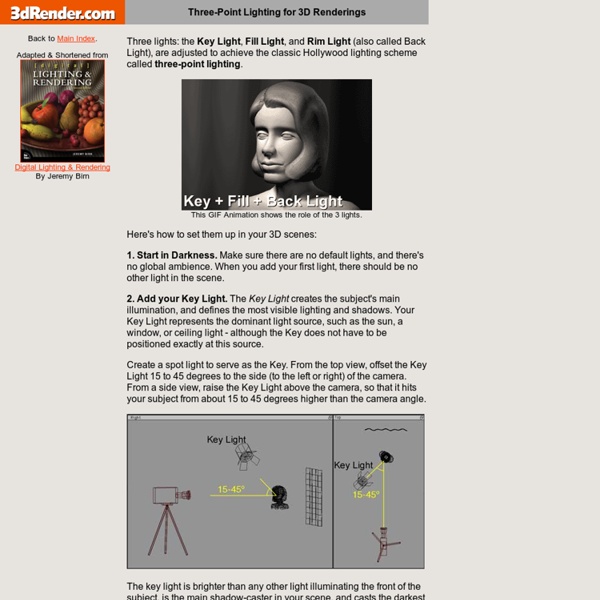



Fotogenica UT Austin Web Video Guidelines - Production The best lighting technique is 3-point lighting. In 3-point lighting 3 lights are used. A key light, a fill light, and a back light. A key light is the main light that is placed at a thirty to forty-five degree angle in front of the subject and to the side of the camera. The second light in 3-point lighting is the fill light. The fill light is placed on the side of the camera just opposite of the key light. Reflectors can be any object that will reflect light. The third light in a 3-point lighting system is the backlight. If available, a forth light can be used for a background light. Always light the subject.
Sunt ghid de calatorie: in Ardeal cu Nikon COOLPIX L810 | Nikonisti.ro Situat in interiorul arcului carpatic, Ardealul este una dintre regiunile istorice ale Romaniei. De-a lungul timpului, a facut parte din Imperiul Roman, din Regatul Ungariei, respectiv din Imperiul Austriac. Alexandru Axon a explorat partea de vest Ardealului incepand cu Alba Iulia si punctele sale de atractie, cum ar fi Cetatea si Catedrala Mantuirii Neamului. Urmatoarea oprirea a fost Aiud cu Calvarul Aiudului si Cetatea Medievala. Fotograful a continuat cu Turda si faimoasa Salina si Cluj cu nenumaratele puncte de atractie. Ardealul este o zona pe care de mult vroiam sa o descopar, dar nu am avut ocazia. Prima pagina nikonisti.ro Sunt ghid de calatorie Romania | Oltenia | Ardealul partea I | Ardealul partea II | Maramures | Dobrogea | Moldova | Banat si Crisana | Bucuresti | Harghita si Covasna Alba Iulia Conform zicalei “Cine se scoala de dimineata departe ajunge”, am plecat din Bucuresti in jurul orei 6am, avand ca destinatie Alba Iulia.
Television Production Lighting: The Key Light Key Light Considerations As the name implies, the key light is the main light. In terms of coherence or quality the key light should be in the middle of the hard-to-soft range. As you can see from some of the illustrations in these chapters, light that is either too hard or too soft is not desirable for most subject matter -- especially people. In three-point (formula) lighting the key light is placed at an angle of between 30- and 45-degrees from either the left or the right of the camera. In the photograph of ▲ the model at the start of the module the key light is on the left, just as it's shown in this drawing. Forty-five degrees off to one side is best because, among other things, it brings out optimum texture and form (dimension) in the subject. This brings us to the rule we'll need to keep in mind, especially if multiple cameras and camera angles are involved in the production: Light for the close-up camera. Does it matter if the key is on the right or the left? The Key's Vertical Angle
Patrick Joust kateoplis: "We in the United States grow up celebrating ourselves as the world’s most powerful nation, the world’s richest nation, the world’s freest and most blessed nation.Sure, technically Norwegians may be wealthier per capita, and the Japanese may live longer, but the world watches the… "In the Social Progress Index, the United States excels in access to advanced education but ranks 70th in health, 69th in ecosystem sustainability, 39th in basic education, 34th in access to water and sanitation and 31st in personal safety. Even in access to cellphones and the Internet, the United States ranks a disappointing 23rd, partly because one American in five lacks Internet access. This Social Progress Index ranks New Zealand No. 1, followed by Switzerland, Iceland and the Netherlands. Many who back proposed Republican cuts in Medicaid, food stamps and public services believe that such trims would boost America’s competitiveness.
Photo Is My Life easyCover camera case Home - Generation Awake (EN) 30 Magical Photos Of Children Playing Around The World No matter their cultural background, no matter their economic situation, kids will always find imaginative ways to have fun. Their wild imaginations and magical childhood moments, when captured on camera by talented photographers, can make for truly wonderful photos. These 33 images we collected will prove that childhood can be wonderful no matter where you go. Many in the Western world fear that technology is making today’s children lose touch with nature and with their own creativity, and while there are arguments to be made for the intellectual stimulation that apps and programs for children can bring, there’s also something to be said for simply playing with a stick in the mud or chasing dandelion seeds though an open meadow. For better or worse, the children in these photos seem entirely content making their own fun. Indonesia Image credits: Ipoenk Graphic Image credits: Agoes Antara Image credits: I Gede Lila Kantiana Image credits: Gede Lila Kantiana Russia Burkina Faso Myanmar Tajikistan